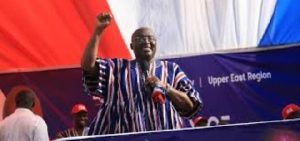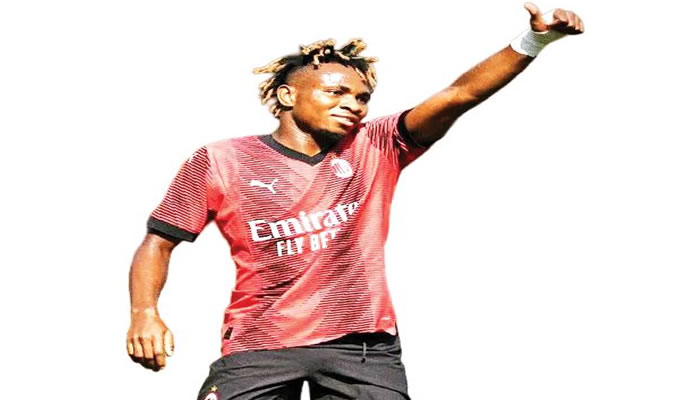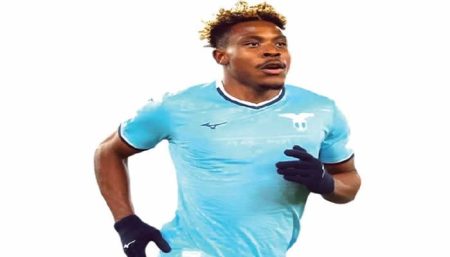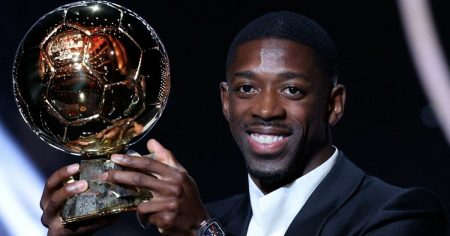Samuel Chukwueze’s imminent departure from AC Milan marks a significant shift in the club’s trajectory. His arrival from Villarreal, laden with expectations following a stellar Europa League campaign, promised a dynamic addition to the Rossoneri attack. However, the Nigerian winger’s time in Italy has been plagued by injuries and limited game time, culminating in a frustratingly inconsistent spell that has fallen far short of his potential. His 32 appearances across all competitions this season mask a deeper issue: a mere 11 starts and a paltry 1,214 minutes on the pitch. These statistics paint a picture of a player struggling to find his footing within the squad, often relegated to the role of a substitute and unable to replicate the electrifying form that once made him a highly sought-after talent.
The discrepancy between Chukwueze’s impressive performances at Villarreal and his struggles at Milan highlights the complexities of player adaptation and the influence of tactical systems, playing style, and managerial trust. While he showcased glimpses of his talent with five goals and one assist, his overall impact has been muted. A goal every 242.8 minutes, coupled with a limited number of shots on target and successful dribbles, underscores the challenges he faced in translating his previous success to the Serie A stage. This lack of consistent contribution, compounded by Milan’s financial constraints following their failure to secure Champions League qualification, has paved the way for his exit. The club views his sale as a necessary step towards balancing the books and generating funds for reinvestment, a pragmatic decision driven by economic realities and the need to reshape the squad.
Fikayo Tomori’s potential departure further underscores Milan’s commitment to a significant squad overhaul. The English defender, once a bedrock of the Rossoneri defense following his move from Chelsea, has endured a difficult season marred by both fitness issues and inconsistent form. His single appearance in Milan’s last nine matches, coupled with a near-transfer to Tottenham in January, signals a decline in his standing within the team. While Tomori resisted the January move, a summer departure now seems increasingly likely. The reported interest from several Premier League clubs suggests a potential return to England, offering Tomori a chance to reignite his career in a familiar environment. His situation mirrors that of Chukwueze, highlighting the cyclical nature of football and the need for clubs to adapt and evolve their squads based on performance, potential, and financial considerations.
Milan’s restructuring extends beyond individual player departures and encompasses a potential shift in leadership. The rumored appointments of figures like Fabio Paratici or Zlatan Ibrahimović as sporting director suggest a desire for fresh perspectives and a renewed vision for the club’s future. This potential change in management, coupled with the possibility of a new coach, could further influence the composition of the squad. The fates of players like Theo Hernandez, Yunus Musah, Ruben Loftus-Cheek, and Emerson Royal, all linked with potential exits, hang in the balance. This period of transition represents a critical juncture for Milan, offering an opportunity to reassess their strategic direction and build a squad capable of competing at the highest level.
The situations of players currently out on loan add another layer of complexity to Milan’s reshuffling. Juventus’s reported interest in activating Pierre Kalulu’s purchase clause and Marseille’s apparent desire to retain Ismaël Bennacer could further reshape the defensive and midfield lines. The futures of Noah Okafor, Yacine Adli, Tommaso Pobega, and Lorenzo Colombo also remain uncertain. Even if some return from their loan spells, their long-term prospects at Milan are far from guaranteed. This influx of returning players, combined with the potential departures of established figures, creates a dynamic and uncertain landscape for the club’s squad planning.
In essence, AC Milan are embarking on a period of significant transformation. The departures of key players, the potential arrival of new leadership, and the uncertainty surrounding loaned-out players all contribute to a sense of flux. This reshaping of the squad reflects a broader strategic shift within the club, driven by a combination of financial constraints, performance evaluations, and a desire to inject fresh energy into the team. The upcoming transfer window will be crucial for Milan, as they navigate these complex decisions and strive to build a squad capable of reclaiming their place among football’s elite. The success of this transition will ultimately determine the club’s trajectory in the coming seasons and whether they can return to challenging for major honors.














